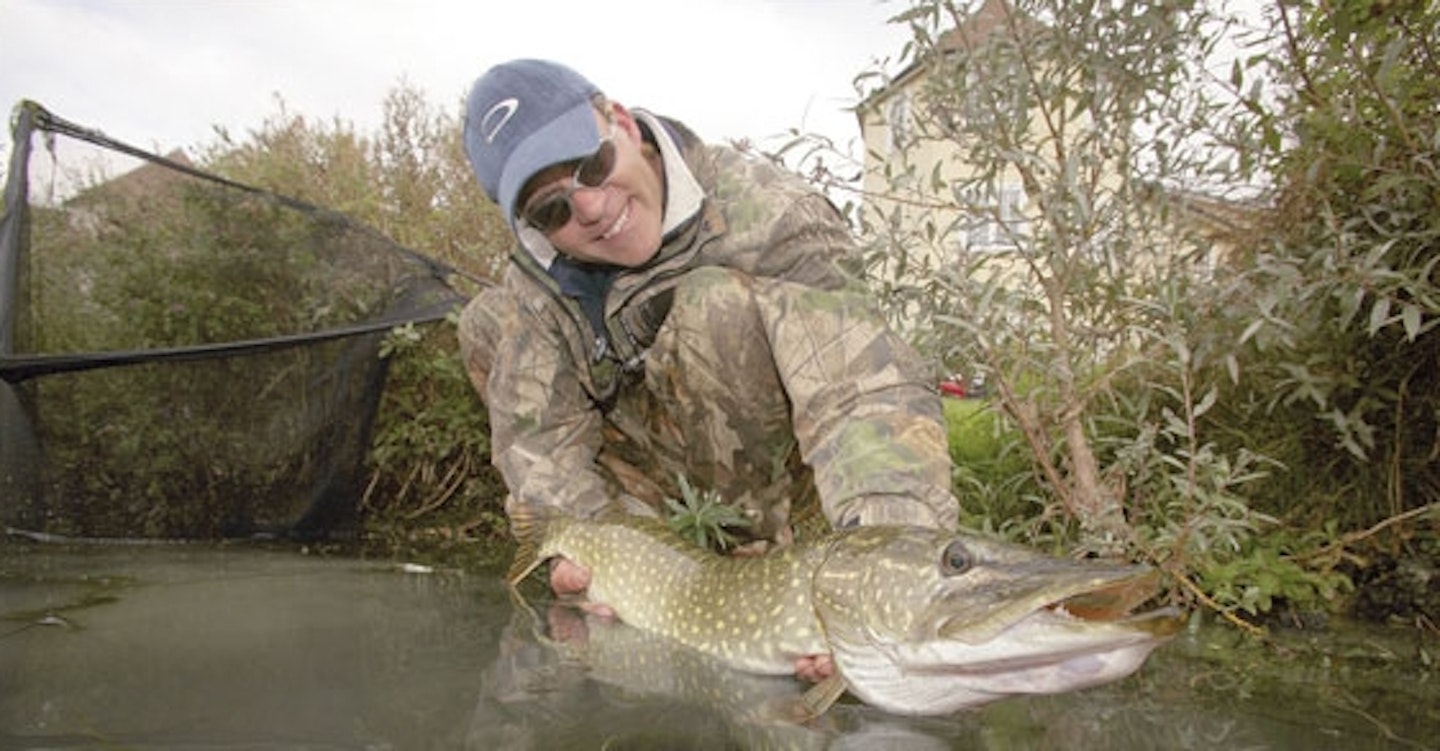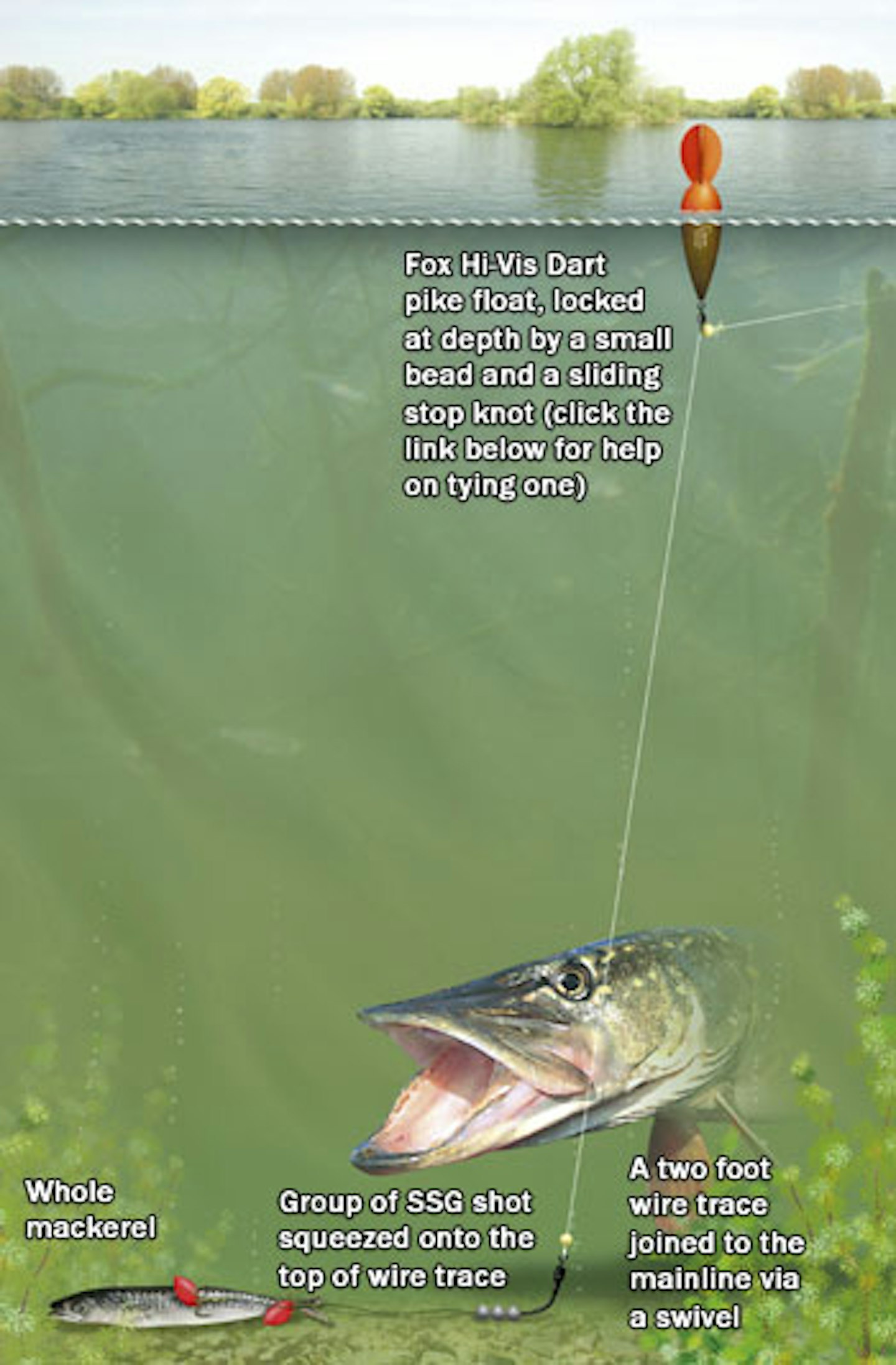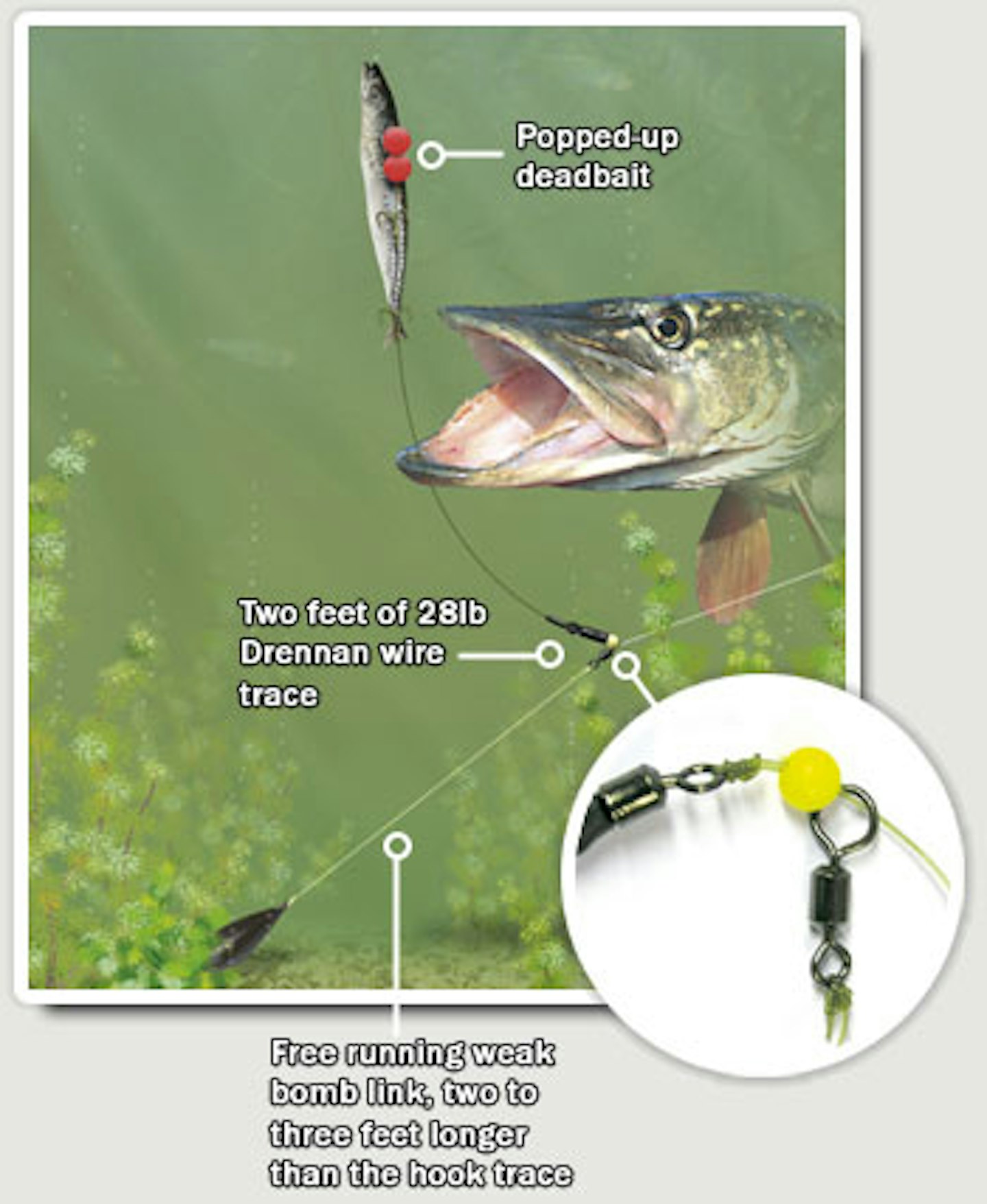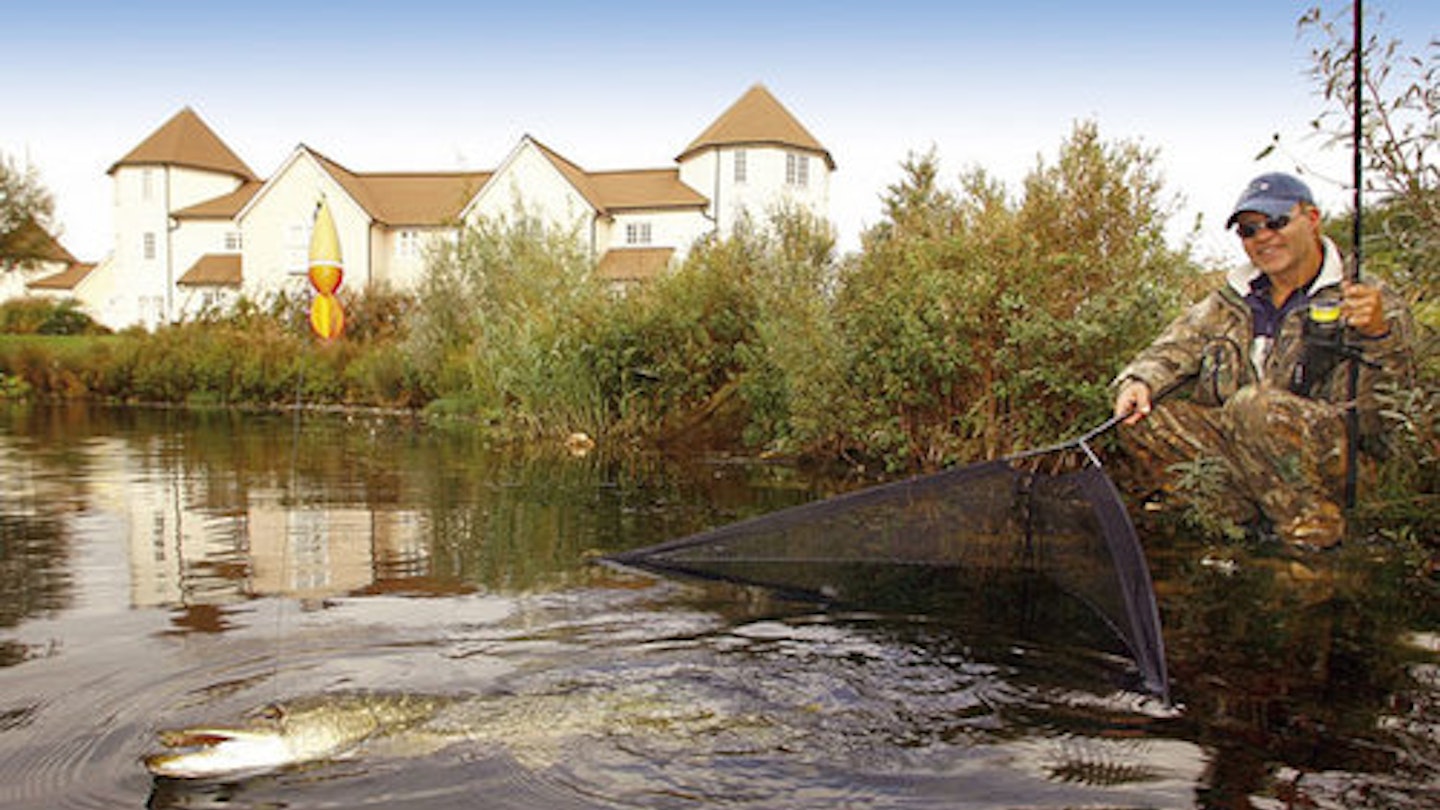As winter arrives and prey fish shoal up, pike go on the prowl. Even if you’ve never fished for them Matt Hayes has the advice you’ll need to enjoy a winter of great predator sport. This is the best time of the year for pike, don’t miss it...
Tales of monster pike are etched in the annals of angling history.
Numerous giants have been caught over the magical 40lb mark, but the legends of huge predators have been even more impressive.
In 1896, a dead pike was washed up on the shores of Dowdeswell Reservoir, near Cheltenham, it was said to have weighed over 60lb. Now that is a BIG pike!
Folklore has it that pike have been responsible for the disappearance of dogs, swans and even errant children!
Yep, it is fair to say that pike have inspired more than their fair share of crazy stories. However, many years ago Angling Times did run a true story of how a 100lb German Shepherd dog staggered out of a lake with a 14lb pike clamped to one of its front paws!
In this feature I won’t be using a dog’s leg as bait, but I will reveal how easily you can catch pike this winter. The next four months is THE time to target these magnificent predators, even if you’ve never caught one don’t be put off giving pike fishing a go, it could really lift your winter fishing.
PREDATOR LOCATION
Pike fishing, especially on stillwaters, can be all about location. Basically, you can’t catch what isn’t there.
Where to head for on a water all depends upon the time of year. In November, when there’s still plenty weed growth, pike congregate in weedy areas, that are three to six feet deep, as the water is warmer. These places also provide camouflage, enabling pike to ambush prey fish. Once December hits, and the first frosts bite, target water of at least six to 15 feet.
Other parts of the lake to try are where there is some kind of structure or feature. Islands, ledges, sunken trees, bars, plateaus or clear patches surrounded by weed are all good. Not only does structure attract pike but it also draws in prey fish.
Imagine 100 people in an empty field, with a tree in the middle. The chances are that every one of those people would stand underneath it.
Fish are the same. Anything on a lake that’s different will attract them as it provides shelter, cover and somewhere to launch an attack on prey fish.
If your water is featureless, there are a number of other clues to look for. Scan the water for sprays - this is when small fish scatter across the surface - or where lots of roach or small bream are topping and rolling. If you find the prey fish, you’ve done half the job of locating the pike.
Another great tip, that is never mentioned by pike anglers, is to look for grebes working and diving. These fish-eating birds feed on the same species as pike, if they concentrate on an area of the lake the chances are the pike won’t be far away.

WEATHER
Stillwater pike are hugely affected by the prevailing weather conditions. The perfect conditions for deadbaiting are sustained periods of low barometric pressure, mild temperatures, a bit of a chop on the water and a reasonable amount of cloud cover.
High pressure fronts that bring bright sunny days and sharp frosts are a killer when it comes to pike action. In these conditions, their feeding spells will be very sporadic, normally reduced to either dawn or dusk.
Changes in pressure front are very important. Pike are like living barometers, they know the day before that a changing weather front is on its way.
These conditions can really spur them into a feeding binge, especially if it is a steady pressure fall. This explains those days when it seems all wrong – bright, clear and sunny – and you catch loads of pike. They have felt the weather change coming.
Although, it sounds like they only feed when the day is perfect, don’t let this put you off. As long as there is a bait in the water, there is always a chance. Pike are strange creatures with many different senses that can be triggered by the smallest of condition changes.
TERMINAL TACKLE
When it comes to the terminal end, you MUST ALWAYS use some form of wire trace as the hooklink when pike fishing.
They have razor sharp teeth and they WILL cut through the heaviest monofilament or braid. My trace wire choice is 24lb or 28lb Drennan. I always use these around two foot long, again, if you use them any shorter a pike could take the whole trace into its mouth and cut the mainline.
Hook choice is either size six or size eight semi-barbless trebles. Semibarbless means only one of the hooks has a barb while the other two are barbless. The barbed hook goes into the bait, while the two barbless hooks make the trebles easier to unhook.
The other thing I always use with my traces are Fox Bait Flags. These small, red rubber flags add a splash of colour to the bait and help nail it to the hooks during the cast.
My last point concerning traces is that after every pike you catch carefully check the trace for kinks. If the trace resembles a strand of curly hair, it needs to be changed.
These kinks cause weak points in the wire and it will then snap under little tension, leaving the end tackle in the fish.
MY FLOAT RIG

If you are new to pike fishing, using a float rig is a good start. You don’t need expensive alarms and drop-off indicators and it’s a very exciting way to catch pike.
The floats I use for deadbaiting are fished bottom only, similar to a waggler, but the depth is controlled with the use of a stop knot rather than split shot.
To fish the float effectively you’re looking to fish the bait up to two feet overdepth. Fishing them further overdepth can lead to fish being deeply hooked.
To plumb the depth, cast out the rig and see how the float sits.
If the float cocks but sits low in the water and begins to drift, the stop knot is set underdepth.
If the float lies on its side, the rig is set too deep.
Retrieve the rig and slide the stop knot up or down the mainline, depending whether the rig is set too deep or shallow.
Recast until the float just cocks. At this point, with the split shot resting on the bottom, the rig is set two feet overdepth.
You can then carefully tighten up to the shot, anchoring the bait on the deck. The line is pulled at a slight angle and will be in direct contact with the hookbait.
BAIT CHOICE
Pike baits are legion. In my experience, their success or lack of it depends greatly on the amount of angling pressure the water has seen.
If the water is only lightly fished, then classic baits like mackerel, herrings and sardines are an excellent first choice. Packed with oils and salty body juices, there are not many pike that will turn their noses up at one of these pungent baits.
Fished whole, or as half baits, their silvery skins also ensure they are very visible baits, especially in clear water.
If the lake you’re targeting receives a lot of pike angling pressure and the pike have become a bit wary of classic sea baits, then it is time to use something a bit more unusual. Smelts fill this gap perfectly and are fantastic on all waters.
With a distinctive cucumber smell and soft flesh, pike adore them. The only thing I will say is try to get the biggest smelts that you can. Bigger is always better.
Neville Fickling sells my favourites, he calls them ‘Turbo Smelt’. These fish are around 10 to 12 inches long and have helped me to land some of my biggest fish to date.
If you cannot get smelts, don’t despair, other great change baits include eel section, lamprey or even squid.
Another bait that I’m never on the bank without are FRESHLY FROZEN coarse baits. They need to be as fresh as possible and I will only use a dead roach that has a blue-silver sheen to it.
To achieve this, if you freeze your own baits, wrap each one individually in cling film and freeze them flat, this keeps the bait in top condition. I won’t use baits that have scales missing or which are white from freezer burn.
An extra tip, when fishing whole baits, is to pierce both sides of the fish before you cast in.
Take a pair of scissors or a blade, and puncture the bait along its flank a couple of times. Don’t go mad, you’re not Psycho’s Norman Bates; you just need three holes each side to release the bait’s body juices into the water.
MY LEGER RIG

My leger set up is a rig that my old mate, Mick Brown, showed me years ago.
The two main problems encountered by pike anglers when legering are tangles and weed. By using a leger rig with a bomb link two to three feet longer than the trace, you eliminate tangles on the cast.
The inertia of the cast causes the trace and the long bomb link to fly apart and fly through the air like a helicopter. Once the lead hits the bottom, you can tighten right up to the lead.
As the bomb link is free running, the fish won’t feel the weight when it takes the bait. A resistance-free rig is important as pike hate resistance and will quickly eject any bait that they feel is wrong.
The paternoster rig is great for fishing on the deck, or for presenting livebaits or pop-up deadbaits over weed (see diagram).
STRIKING
Pike have very hard mouths. To illustrate this imagine trying to hook the inside of a thermos flask! To hit and hook every pike, as soon as the float makes any unnatural movement, get ready with the rod.
Count, 1,000…2000…up to 5,000, then point the rod at the fish and wind VERY QUICKLY until the mainline is as tight as possible. At this point, STRIKE HARD!
When I say hard, I mean hard. Don’t strike as if you would into a carp or chub, but a good, heavy pull. Really give the rod a hefty tug right round in order to pull the hooks into the pike’s jaw.
The strike itself should be forceful enough to clear the bait off the hooks and transfer them into the pike. If you strike like you would with a waggler you’ll only end up pricking the fish, the hooks will bounce out and the pike will drop the bait. The result equals a missed bite.
Failing to strike runs correctly is the main reason pike anglers miss bites.
CARE AND UNHOOKING A PIKE
Even though they look vicious, pike are very delicate animals and they need to be unhooked, cared for and returned to the water quickly. No one should go pike fishing without the correct unhooking gear, you owe it to the fish.
You need a good quality pair of forceps that are at least eight inches long, a pair of cutters for cutting the points off awkwardly placed hooks and a well-padded unhooking mat.
Follow my guide (below), to unhooking. Once the fish is unhooked, return it to the water ASAP, holding it by the tail until it has fully recovered and is able to swim away strongly.
HOW TO UNHOOK PIKE
- Flip the fish onto its back. Slip your hand carefully under its gill plate and carefully open its jaws.
- Using some long forceps, carefully clamp the forceps onto the bottom hook’s shank and twist to remove it.
- Having removed the bottom hook, repeat the same process to remove the top treble from the pike’s mouth.
YOU MIGHT ALSO BE INTERESTED IN

